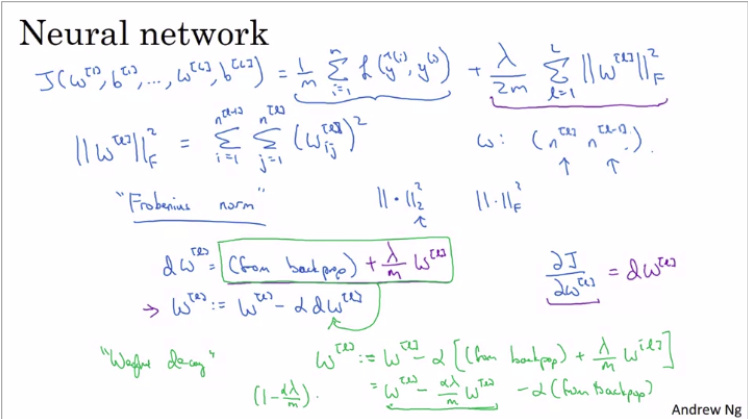
Located at the Walsh School of Foreign Service, the Center for Security and Emerging Technology focuses on the security impacts of emerging technologies. The center supports academic research in the field security and emerging technologies, and provides nonpartisan analysis for policymakers. CSET is committed to educating the next generation of analysts, policymakers, and diplomats. Learn more about CSET. Here are some highlights about the research of the center.
Center for Security and Emerging Technology
Georgetown University's Center for Security and Emerging Technology has been granted a $55million grant by the Open Philanthropy Project. This money will be used to create a new think tank. This group is dedicated policy research at both the national and international borders. Jason Matheny (the group's director) was previously the director for the Intelligence Advanced Research Projects Activity. Matheny has a vision to help policymakers better understand new technologies' security implications and the potential threats to society.

Lead Analyst
As the Lead Analyst at CSET Georgetown, your responsibilities include conducting surveys about U.S. China S&T competition as well as global movements of emerging technologies talent. You'll work with other CSET analysts, including Professor William Hannas, to design and execute survey projects. He is active in student government at the university and does research at the Center. His research interests include cybersecurity and foreign and domestic policies.
Director, Data Science
Catherine Aiken, Director of Data Science at CSET Georgetown is Catherine Aiken. Her B.A. was in Mathematics. Her B.A. was in Mathematics, and she also earned her Master's Degree in Data Science from George Washington University. Before joining CSET, her previous roles included managing the communications department and conducting human-subjects research for the Carnegie Endowment for International Peace. She is a graduate of the University of Maryland with a doctorate of political science. Georgetown University.
Faculty
The Edmund A. Walsh School of Foreign Service is inviting applications to the Gracias Family chair in Security and Emerging Technology at the Gracias Family. This position will combine administrative and teaching responsibilities with potential affiliation with the Science, Technology, and International Affairs Program. This position is able to help the School achieve its strategic vision. Visit the CSET Georgetown Website for more details. The deadline for applying is June 15, 2018,

Subgrantees
Since its inception, the Center for Science and Technology at Georgetown University received funding of nearly $100 million. The Center is funded by donations from outside institutions and by organizations like Bill and Flora Hewlett Foundation. The Center will continue to be supported for the next 20 year by the new grant. This will allow it to increase its staff, research capabilities, as well as inform policymakers about the latest technologies. The Center is committed to advancing science and technology for the benefit of humanity, and a large donation will go a long way toward ensuring the future of CSET.
FAQ
How does AI function?
An artificial neural network is made up of many simple processors called neurons. Each neuron processes inputs from others neurons using mathematical operations.
The layers of neurons are called layers. Each layer serves a different purpose. The first layer receives raw data like sounds, images, etc. Then it passes these on to the next layer, which processes them further. The last layer finally produces an output.
Each neuron has a weighting value associated with it. When new input arrives, this value is multiplied by the input and added to the weighted sum of all previous values. If the result is greater than zero, then the neuron fires. It sends a signal to the next neuron telling them what to do.
This continues until the network's end, when the final results are achieved.
Who are the leaders in today's AI market?
Artificial Intelligence (AI) is an area of computer science that focuses on creating intelligent machines capable of performing tasks normally requiring human intelligence, such as speech recognition, translation, visual perception, natural language processing, reasoning, planning, learning, and decision-making.
Today, there are many different types of artificial intelligence technologies, including machine learning, neural networks, expert systems, evolutionary computing, genetic algorithms, fuzzy logic, rule-based systems, case-based reasoning, knowledge representation and ontology engineering, and agent technology.
There has been much debate about whether or not AI can ever truly understand what humans are thinking. But, deep learning and other recent developments have made it possible to create programs capable of performing certain tasks.
Google's DeepMind unit today is the world's leading developer of AI software. Demis Hassabis founded it in 2010, having been previously the head for neuroscience at University College London. DeepMind, an organization that aims to match professional Go players, created AlphaGo.
Which AI technology do you believe will impact your job?
AI will replace certain jobs. This includes truck drivers, taxi drivers and cashiers.
AI will lead to new job opportunities. This includes jobs like data scientists, business analysts, project managers, product designers, and marketing specialists.
AI will make it easier to do current jobs. This includes accountants, lawyers as well doctors, nurses, teachers, and engineers.
AI will make existing jobs more efficient. This applies to salespeople, customer service representatives, call center agents, and other jobs.
How does AI work?
An algorithm is a sequence of instructions that instructs a computer to solve a problem. An algorithm can be described in a series of steps. Each step is assigned a condition which determines when it should be executed. The computer executes each step sequentially until all conditions meet. This continues until the final result has been achieved.
Let's suppose, for example that you want to find the square roots of 5. You could write down each number between 1-10 and calculate the square roots for each. Then, take the average. That's not really practical, though, so instead, you could write down the following formula:
sqrt(x) x^0.5
This will tell you to square the input then divide it twice and multiply it by 2.
This is the same way a computer works. It takes your input, multiplies it with 0.5, divides it again, subtracts 1 then outputs the result.
Where did AI get its start?
Artificial intelligence was established in 1950 when Alan Turing proposed a test for intelligent computers. He stated that a machine should be able to fool an individual into believing it is talking with another person.
John McCarthy later took up the idea and wrote an essay titled "Can Machines Think?" In 1956, McCarthy wrote an essay titled "Can Machines Think?" He described in it the problems that AI researchers face and proposed possible solutions.
What are the possibilities for AI?
AI serves two primary purposes.
* Prediction – AI systems can make predictions about future events. A self-driving vehicle can, for example, use AI to spot traffic lights and then stop at them.
* Decision making - Artificial intelligence systems can take decisions for us. As an example, your smartphone can recognize faces to suggest friends or make calls.
Statistics
- According to the company's website, more than 800 financial firms use AlphaSense, including some Fortune 500 corporations. (builtin.com)
- In the first half of 2017, the company discovered and banned 300,000 terrorist-linked accounts, 95 percent of which were found by non-human, artificially intelligent machines. (builtin.com)
- In 2019, AI adoption among large companies increased by 47% compared to 2018, according to the latest Artificial IntelligenceIndex report. (marsner.com)
- Additionally, keeping in mind the current crisis, the AI is designed in a manner where it reduces the carbon footprint by 20-40%. (analyticsinsight.net)
- By using BrainBox AI, commercial buildings can reduce total energy costs by 25% and improves occupant comfort by 60%. (analyticsinsight.net)
External Links
How To
How to make an AI program simple
To build a simple AI program, you'll need to know how to code. There are many programming languages out there, but Python is the most popular. You can also find free online resources such as YouTube videos or courses.
Here's a quick tutorial on how to set up a basic project called 'Hello World'.
To begin, you will need to open another file. You can do this by pressing Ctrl+N for Windows and Command+N for Macs.
Then type hello world into the box. Enter to save your file.
Now press F5 for the program to start.
The program should say "Hello World!"
However, this is just the beginning. You can learn more about making advanced programs by following these tutorials.